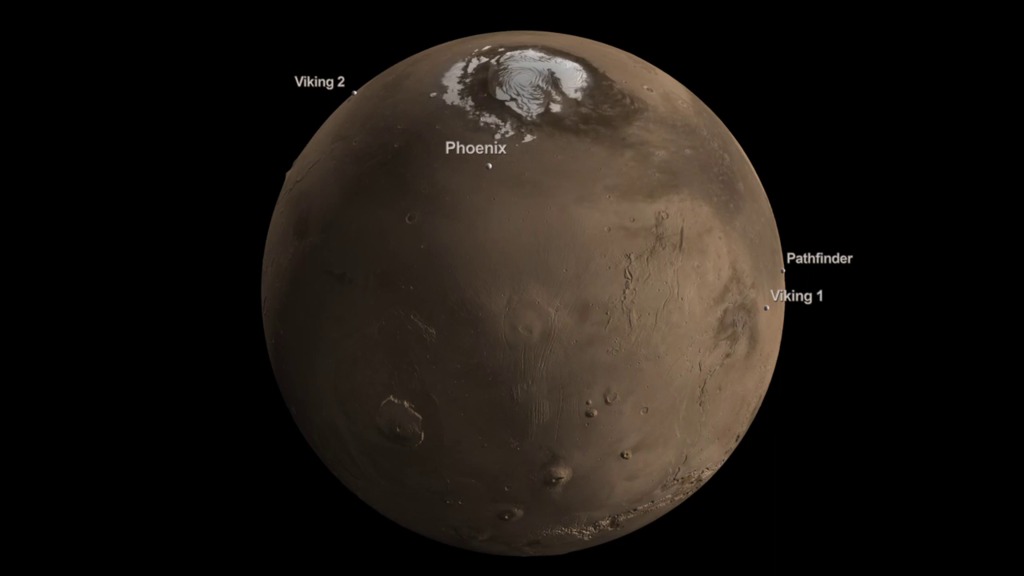Being There
The car-sized rover called Curiosity will be NASA's biggest and most advanced robotic laboratory yet to make tracks on Mars. But it won't be the first to dig into the alien rocks and soils. Since 1976 NASA has landed six spacecraft on the Red Planet: Viking 1, Viking 2, Pathfinder, Spirit, Opportunity and Phoenix. Probing the environment with an array of tools—sensors, optics, drills and shovels—each has had to battle perilous dust storms and subfreezing temperatures to survive. And the discoveries have been worth the fight! Previous missions uncovered evidence of water, a molecule essential for all forms of life. Equipped with a suite of scientific instruments, who knows what Curiosity will find? The visualization shows the landing sites of the six NASA spacecraft to reach Mars and the target location where Curiosity will soon touch down.

NASA's next visitor to Mars is scheduled to land on August 6, 2012. Its mission: Search for evidence of life.

Viking 1, pictured in the foreground, captured the first photograph ever taken on Mars.

The Mars Pathfinder lander's mobile sidekick, Sojourner, was the first rover to roam the planet.
The landing site of each Mars mission can be seen on this rotating globe.
This video shows Curiosity separating from the upper stage of its launch vehicle during its 352-million-mile journey to Mars.

Spirit and Opportunity landed in 2004. Opportunity (above) is still transmitting data and holds the record for most operational days on Mars.

Phoenix discovered water in a sample of icy soil dug from the surface. Its robotic arm was able to create trenches (see inset) only inches deep.

Curiosity's target landing site is Gale Crater. At its center lies Aeolis Mons, an 18,000-foot mountain that the rover will explore.
Credits
Please give credit for this item to:
NASA's Goddard Space Flight Center
Viking 1 photo courtesy of NASA/Mary A. Dale-Bannister, Washington University in St. Louis
Pathfinder photo courtesy of NASA/JPL
Opportunity photo courtesy of NASA/JPL-Caltech/Cornell/Arizona State University
Phoenix lander photo courtesy of NASA/JPL-Caltech/University of Arizona
Phoenix trench photo courtesy of NASA/JPL-Caltech/University of Arizona/Texas A&M University
Gale Crater photo courtesy of NASA/JPL-Caltech/ASU
-
Animators
- Helen-Nicole Kostis (USRA)
- Alex Kekesi (Global Science and Technology, Inc.)
- Ernie Wright (USRA)
-
Producer
- Kayvon Sharghi (USRA)
-
Writer
- Kayvon Sharghi (USRA)
Release date
This page was originally published on Tuesday, July 24, 2012.
This page was last updated on Wednesday, May 3, 2023 at 1:52 PM EDT.
